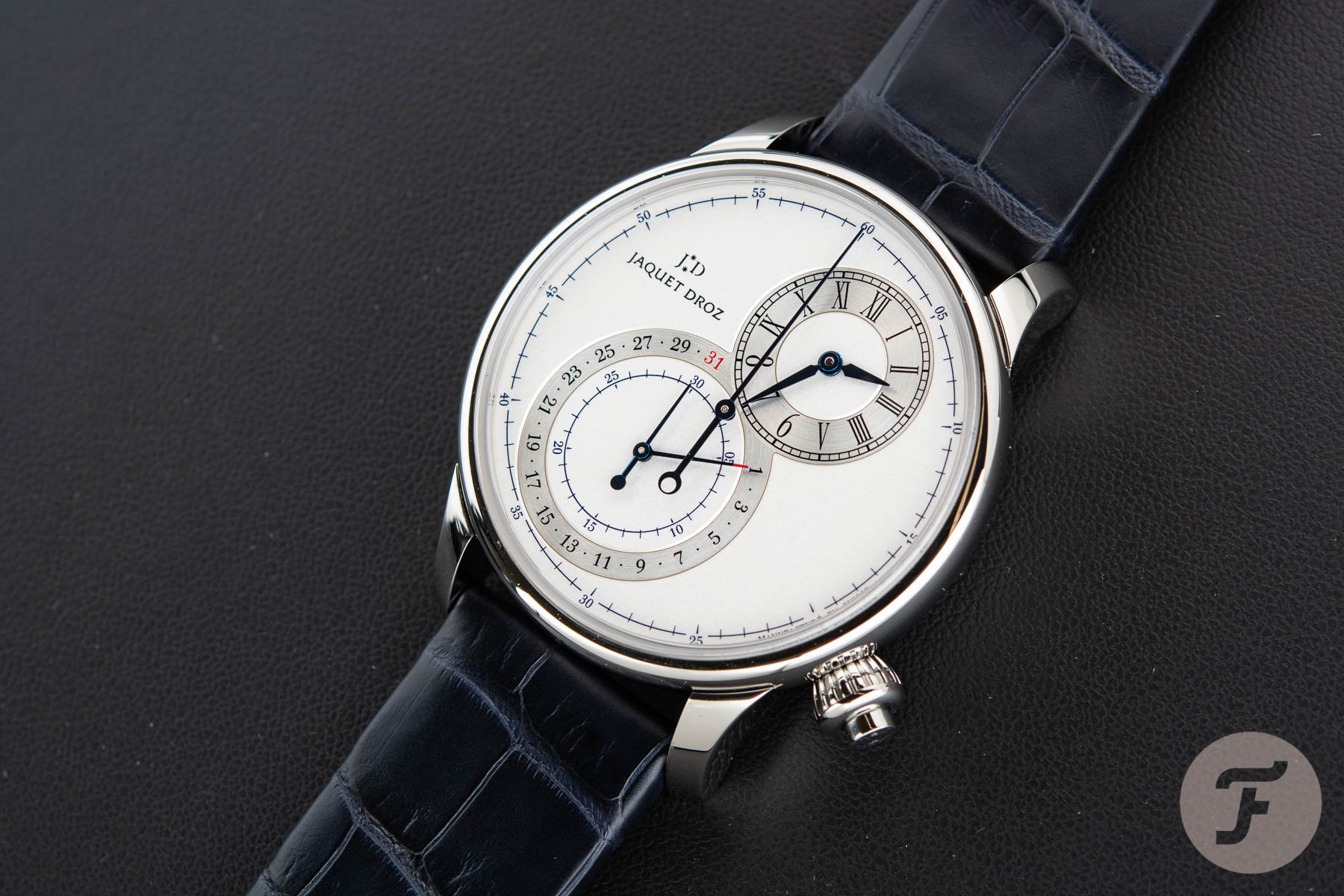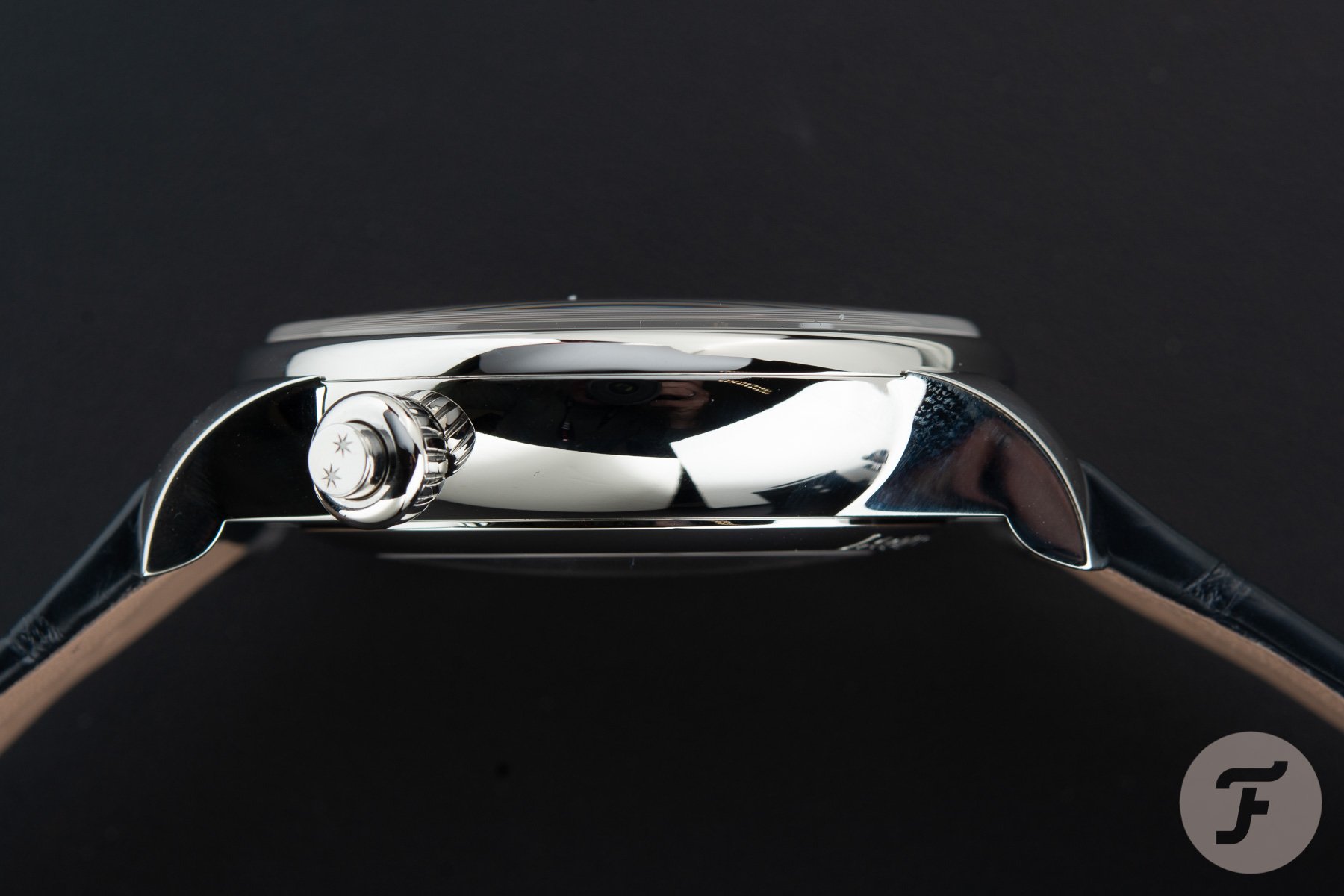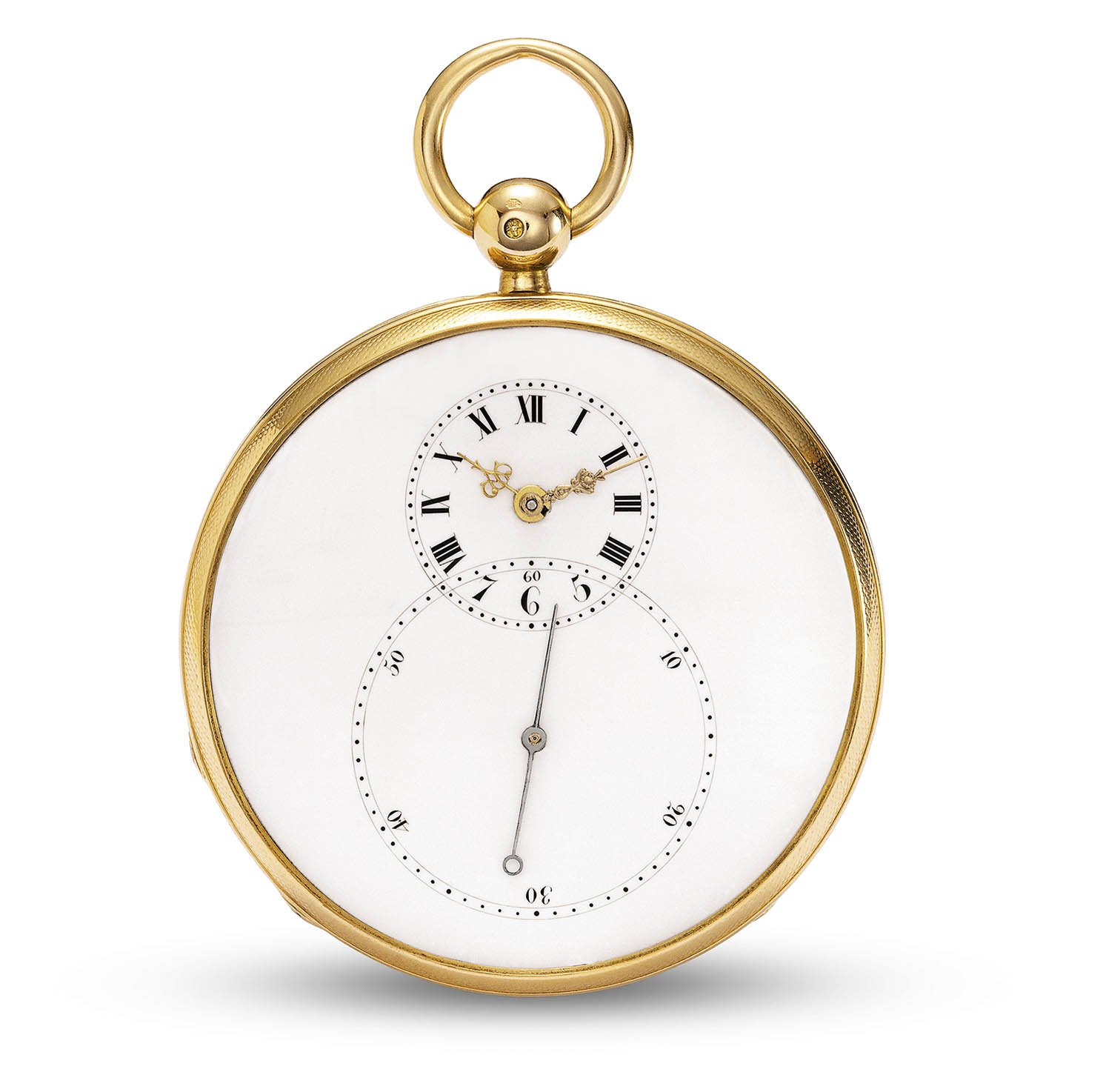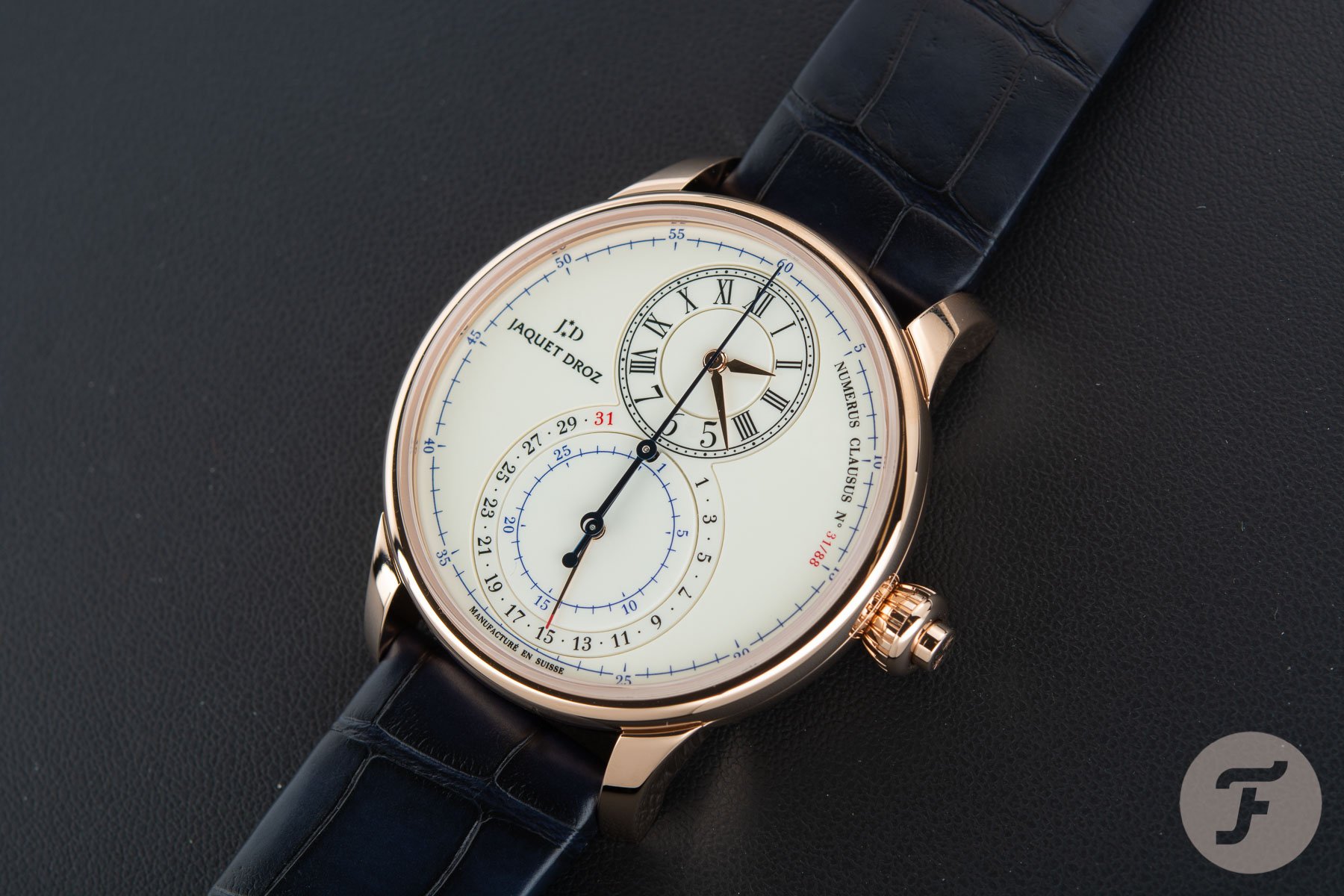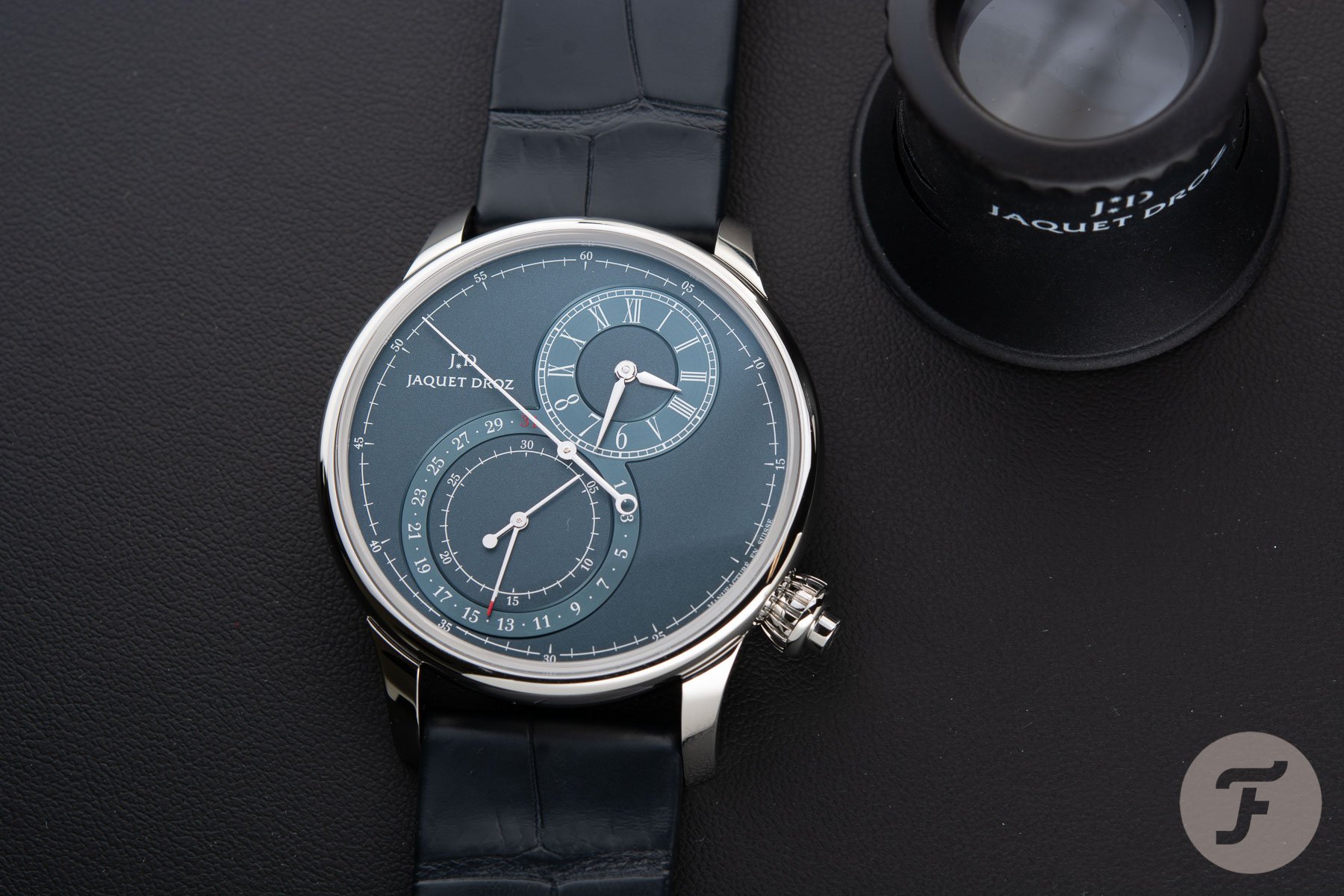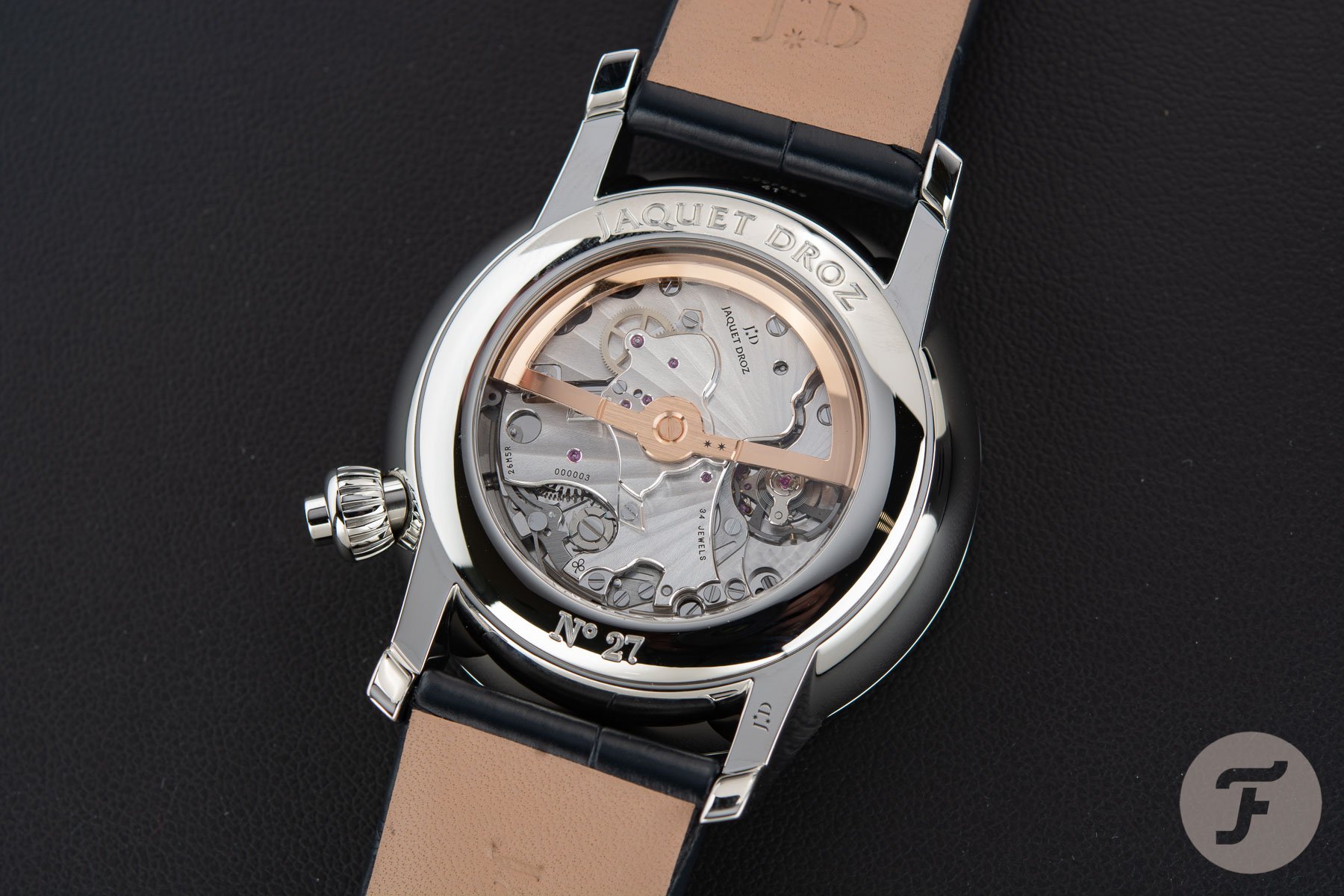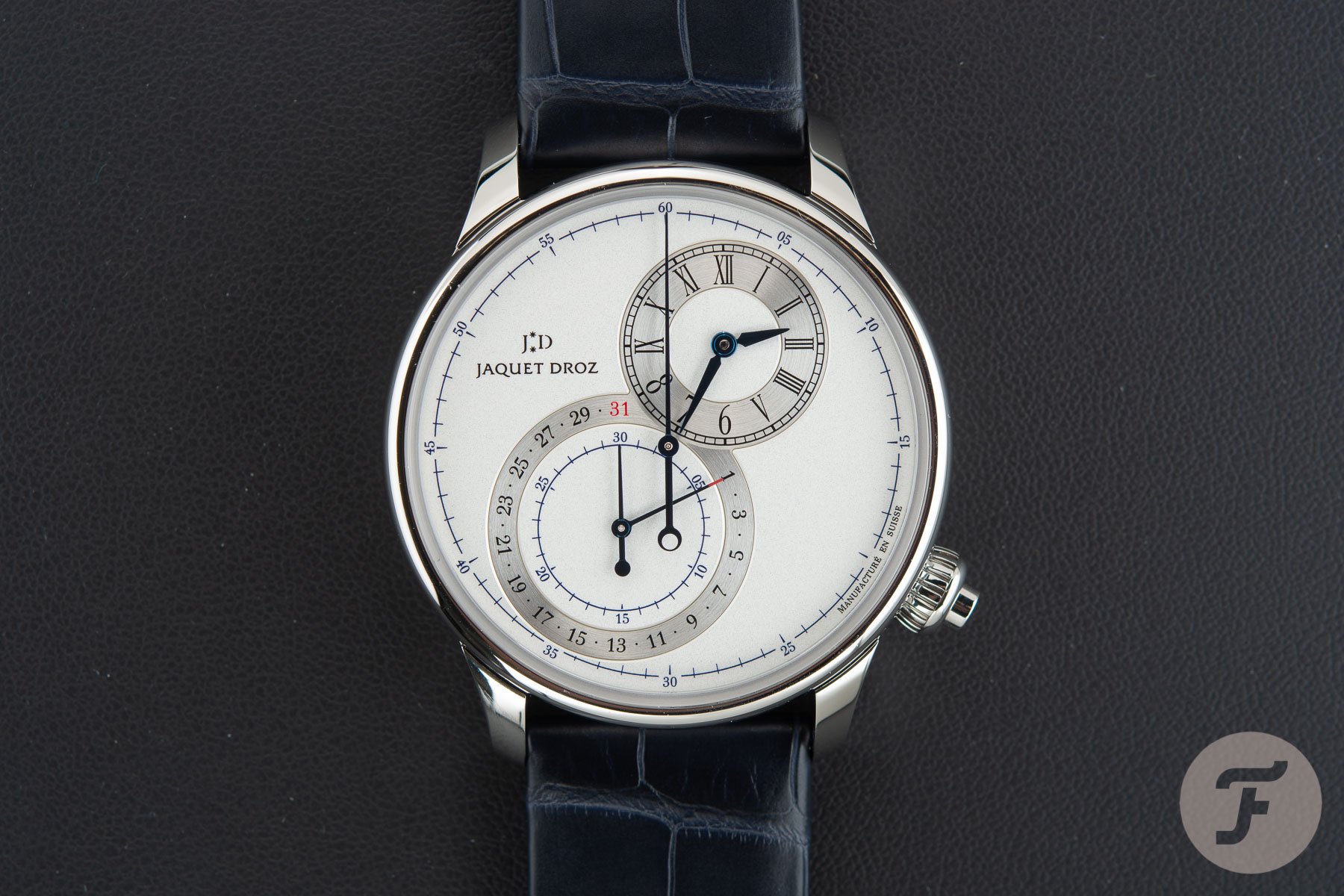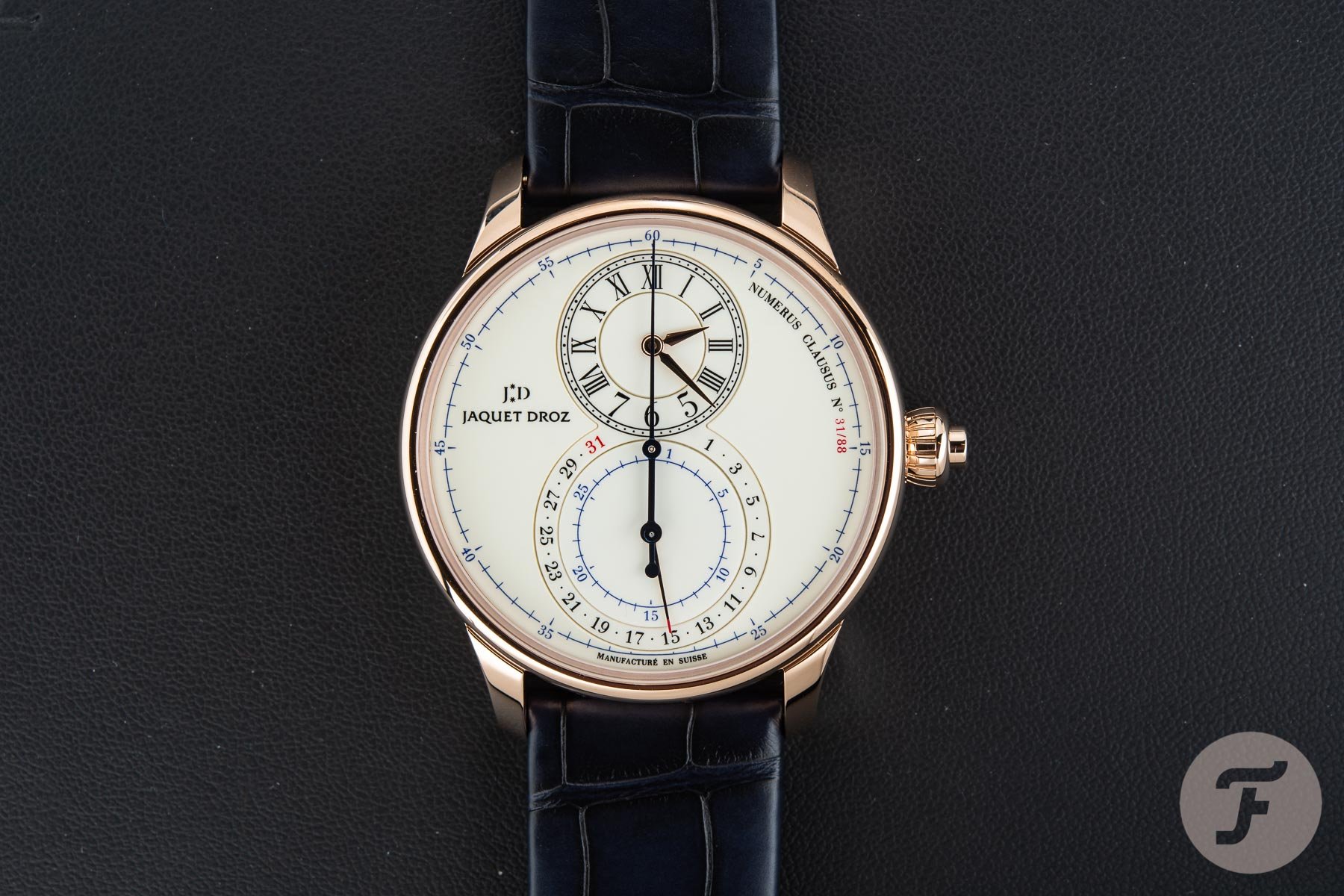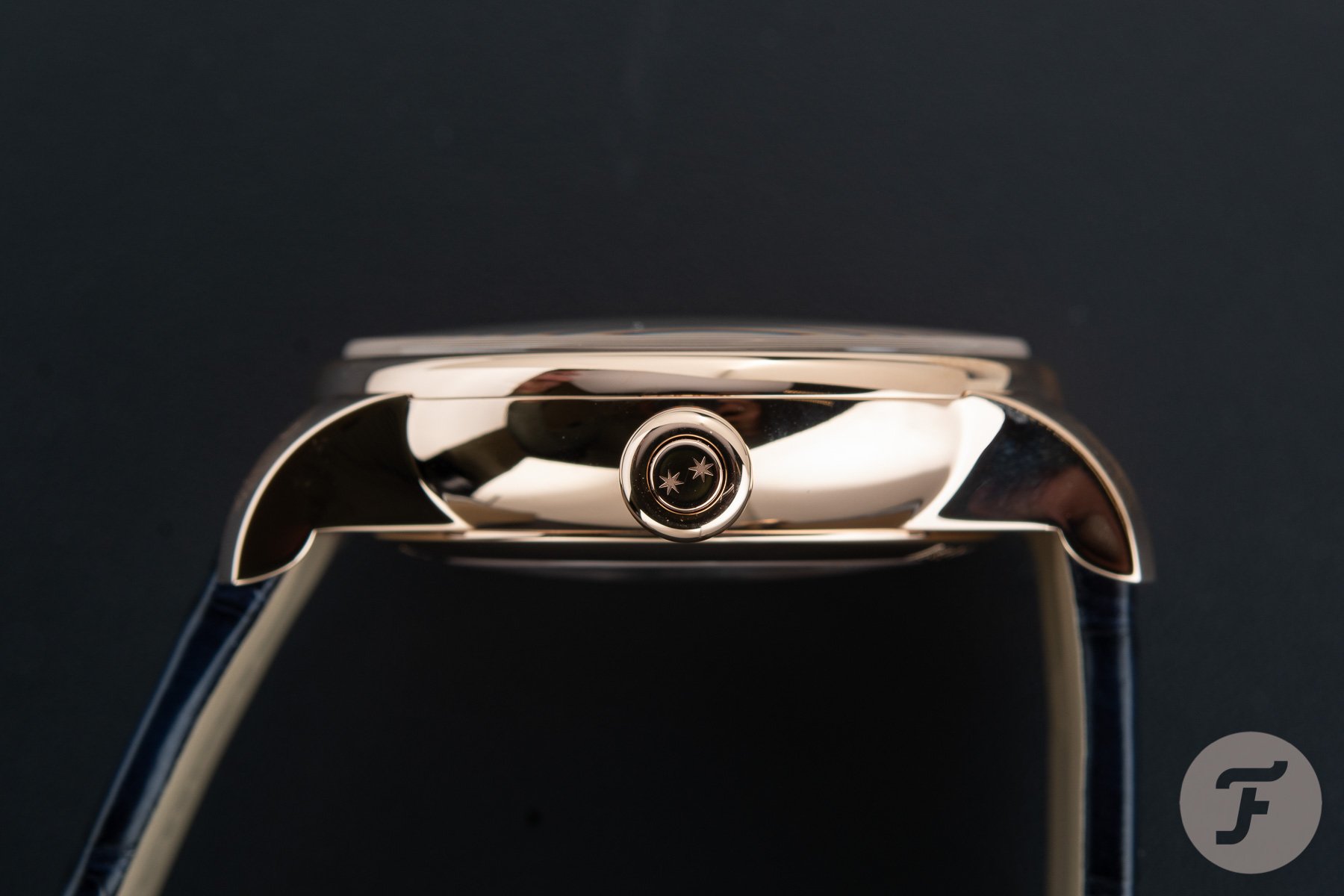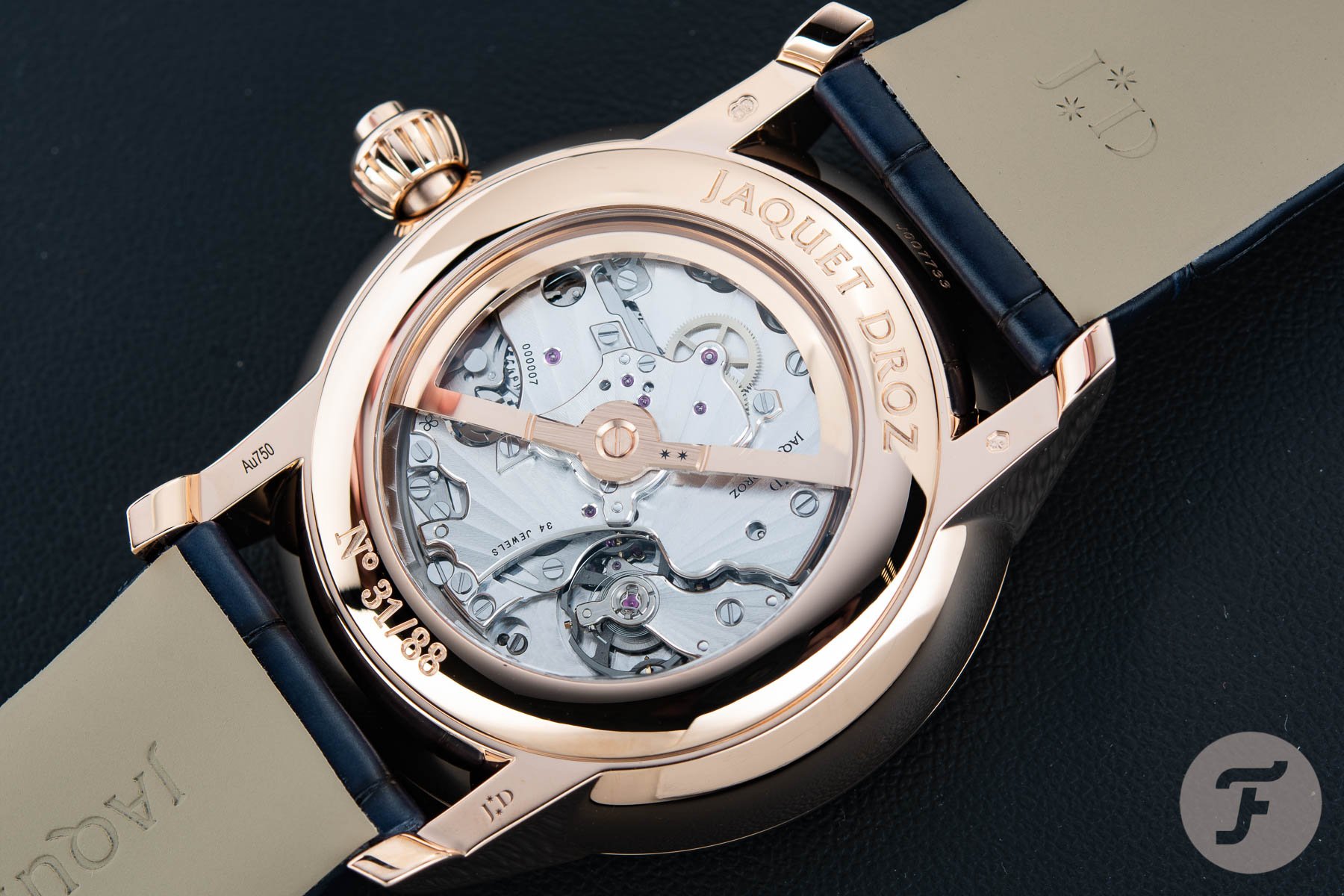Sharmila’s Favourite – The Jaquet Droz Grande Seconde Chronograph
As a journalist specialized in watchmaking, I often get that simple yet annoying question: “What is your favorite brand“ or worse “What is your favorite watch“.
It’s impossible for me to answer the second one since I always have like at least 10 watches I’d like to buy in mind. And to the first question, well, I always try to get around it… Honestly, several companies are dear to my heart, but this year, I don’t know why but I’ve decided to stop avoiding that dumb question, answer it frankly and mostly be true to myself. Yes, I can say it out loud, write it in black and white, engrave it on my front door, tattoo it on my arm: my favorite brand is Jaquet Droz. I discovered it in 2007 and fell in love with it in 2011. Why? Because Jaquet Droz embraces everything that I value: elegant beauty, artistic poetry, mechanical perfection, rich history. It conveys emotions, and emotions are my driving force.
Jaquet Droz Grande Seconde Chronograph
Quick historical overview
I’m always surprised when people ask me about Jaquet Droz and, at the same time, pleased to tell them the story of a great watchmaker from the 18th century. I don’t even need to look at my notes since I know it by heart. Let’s rewind the course of time just for a minute to properly introduce Pierre Jaquet-Droz (1721-1790), born in La Chaux-de-Fonds, mostly known for his famous automata “The Writer“, “The Draughtsman“ and “The Musician“. At the age of 17, he started focusing on building clocks in which he gradually added music and automated figures such as singing birds, and around 1750 his reputation went worldwide. To caught the international clientele and specifically the royal courts, Pierre Jaquet-Droz traveled with his clocks and, in 1773, started to create the famous automata trio. The three automated dolls went abroad, mainly in Europe. Nowadays, with all the technology, people would not be so impressed, mostly because they’ve lost their innocent child soul, but nearly two centuries and a half ago, they were amazed by these magical life-animated characters.
Retrospectively, Pierre Jaquet-Droz is considered as an “ornamental“ watchmaker. His pocket watches case backs are highly decorated with miniature paintings, engraving, enamels, white pearls, and precious stones. Among his clockmaking work, a timepiece built circa 1785 stands out by taking the opposite direction, a path that leads to pure beauty, and creating a new timeless design: the Grande Seconde.
A philosophical interpretation of time
The Grande Seconde pocket watch is the beginning of a new chapter that lingered on through time. It marks both a drastic change and philosophical perception of time with its off-white Grand Feu enamel dial occupied by a gigantic 8. The smallest loop of this lucky number presents the hours and the minutes underlined by two golden Louis XV style hands and black Roman numerals. That unique layout sort of pushes the hours and minutes into the background as secondary information, letting the seconds be in the limelight through the biggest loop. The silver trotteuse follows black Arabic numerals. The beauty of this architecture lays on the mix between the two types of numerals at the center of the dial where both rings meet: the Romans become Arabics from 5 to 7.
Once again, everything might sound obvious to you, a 21st-century man or woman, but you need to let your mind travel through time, turn back the clock and imagine what it was like 234 years ago and understand what a great visionary designer Pierre Jaquet-Droz was. Cases and dials were overloaded with decorations and then the Grande Seconde came along and offered a different way of embracing time. And the strength of its design became so powerful that it is now the face of the brand as a legitimate ambassador.
A universal symbol
Do I honestly need to explain the powerful magic that lays within the number 8? Well, we all know that Asian, in general, but Chinese in particular, 8 is a lucky charm because its pronunciation is close to the word “prosperity“ and is deeply linked to richness and fulfillment. It is also attached to the Buddhist philosophy with the Dharmachakra or “Dharma wheel“ that spreads 8 paths leading to nirvana, to total liberation from pain and unhappiness. Circa 1774, Pierre Jaquet-Droz’s watches are introduced to the Chinese market, and over 600 pieces are exported to China within a decade, a historical fact that can maybe explain the watchmaker’s attachment to the number 8.
The lucky numeral also stands for infinity which is represented by a vertical 8, a never-ending curved outline, and for maternity precisely because of its round shapes that evoke a woman’s womb, a pregnant silhouette as a symbol of birth, life, and natural perpetuation. The last point might be my favorite since I am a mother before anything else and am very sensitive to everything that centers upon motherhood.
Being the face of Jaquet Droz, the Grande Seconde needs to reinvent itself like any other true icon, to change without changing, to embrace modern looks and complications without modifying or, worse, hurting its layout. Any watch designer will tell you that it’s tougher to work on the evolution of an existing piece than creating a new one from scratch. The challenge, both aesthetically and technically, is even bigger with the Grande Seconde because of its unique dial architecture.
Mastering the race
During the past years, the evolution of the Grande Seconde has been outstanding. The brand has done a great job in design and technical development, and it’s fair to highlight it. It’s not just my heart speaking right now but also my eyes. Just take a look at the collection, and you’ll understand the true artistic poetry that emerges from all these gorgeous watches. The Grande Seconde has gracefully adopted on its dial minerals and colored stones, mother-of-pearl, artistic expressions such as paintings, engraving, enameling, paillonné. It has even accepted to have it’s famous 8 off-centered or placed on transparent sapphire discs. And mostly, it has agreed to welcome complications like date, moonphase, dual time and minute repeater. Only one “popular“ complication was missing: the chronograph… until 2019.
The temporal information on a chronograph are generally dispatched in counters or sub-dials recording minutes and hours “supplied“ by the central seconds-hand, right? Which is not possible if you want to respect the design of the Grande Seconde and preserve the flawlessness of its case. First challenge: to integrate the chronograph function to the 8 shape, to the widest circle, through one minutes-hand while the trotteuse goes around the dial. Done. Second challenge: to add a pointer-date display inside the biggest loop of the 8. Done. Third challenge: to activate, stop and reset the chronograph without going through pushers that will unbalance the sophisticated line of the case. Done.
Classical or modern?
During the 2019 Time to Move event, Jaquet Droz presented a mini-collection of its brand new Grande Seconde Chronograph, a range of four watches with one – let’s say – classical piece limited to 88 copies and three contemporary-looking versions. All of them are presented in a 43mm diameter case, in red gold or steel, and propelled by the JD 26MR caliber, a 21’600 vibrations per hour automatic-winding movement integrating one barrel and delivering a 40 hours power reserve.
The limited edition is the watch that gathers all Jaquet Droz’s esthetic codes – and my favorite – such as the thin and elegant red gold case punctuated by a monopusher at 3 o’clock, the Grand Feu ivory enamel dial with Petit Feu black enamel Roman and Arabic numerals while the seconds and date scales are painted in blue. All the indicators linked to the chronograph function are also coated with the same color. The hours and minutes are pointed out by lancine style red gold hands and the date hand, also golden, bears a red varnished tip.
Regarding the modern version of the Grande Seconde Chronograph split into three variants, everything seems to have shifted to the left: the monopusher is placed between 4 and 5 o’clock on the steel case and the 8 layout crosses the dial diagonally, starting at 1 for the top of the small loop and finishing at 7 for the bottom of the biggest loop. Though the setup is unusual compared to the classical version, the shades of the sand-blasted dials are quite… classical! Silvery white, blue with a touch of light grey, and brown taupe mixed with a bit of gunmetal.
So, now that you know (almost) everything about Jaquet Droz’s past and present, which Grande Seconde is your favorite?
More about Jaquet Droz can be found here.

